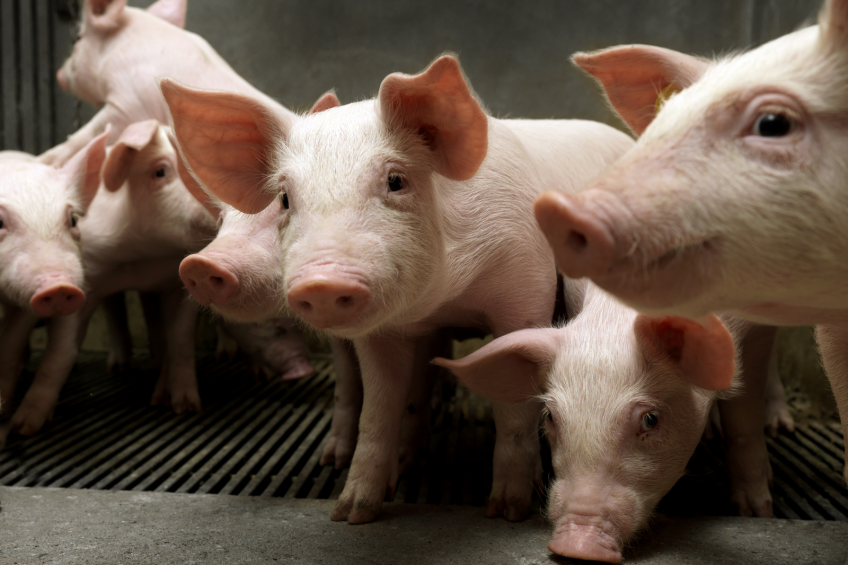A fourfold strategy to fight mycotoxins in pig feed

In the past, binding alone was seen as the solution for reducing mycotoxin effects in the animal. Nowadays, more sophisticated approaches lead the way with emphasis also on supporting the gut, maintaining the immune system and detoxification.
Mycotoxins are inevitable contaminants in foods and feeds and are a major cause of reduced animal performance all over the world. Over 300 mycotoxins are identified, and this number is steadily increasing. Aflatoxins (AFLA), zearalenone (ZEA), deoxynivalenol(DON), ochratoxin A (OTA) and fumonisins (FUM) are the most often occurring mycotoxins in swine feed and in many cases a combination of these mycotoxins are found. Mycotoxin risks are often underestimated, since the mycotoxins may act in an additive or synergistic manner. Repeatedly, signs of mycotoxin contamination are not directly recognised as mycotoxin related, like loss in performance and higher need for medication. This is mainly caused by the effects mycotoxins have on the immune system, the gut barrier or the oxidative status of the animals. Effects that can be seen are for example increased organ size and impaired tissue integrity. This shows that the use of raw materials which contain mycotoxins can have a substantial effect on animal performance.
4 support strategies
Binding of mycotoxins only usually is not sufficient, therefore additional strategies are needed to help pigs maintain a good health status during exposure to mycotoxins. Selko Feed Additives has integrated multiple strategies in the Toxo portfolio to support animals in maintaining a good health status during exposure to a broad spectrum of mycotoxins. These strategies involve amongst others effective binding and support of the gut barrier function and have proven effects in science and in vivo studies.
![]() Effective binding
Effective binding
A common approach in dealing with mycotoxin contaminated feeds is the use of clay minerals as mycotoxin binders. Scientific research has indicated that smectite clays (or products high in smectites) possess the best ability to tightly and efficiently bind aflatoxins. Qmax is an indicator for maximum aflatoxin adsorption capacity (from isothermal analysis method). Trial results have shown that a combination of specific smectite clays have the highest Qmax value for aflatoxin B1 (AFB1), followed by single smectites and bentonites, see Table 1. A recent in vitro study done at the Samitec Institute in Brazil showed that Toxo at 0.5% showed an adsorption coefficient of 98.40%, compared to the standard of AFB1 (1.0 μg/ml) in artificial gastric juice at pH3.0.
![]() Supporting gut barrier function
Supporting gut barrier function
A healthy gut and an optimal functioning gut barrier are essential for animal health and performance. Mycotoxins are known to affect the intestinal wall, which may lead to an impaired barrier function and malabsorption of nutrients. Since not all mycotoxins can be neutralised by binding, it is important to include additional mechanisms that go beyond binding to support a strong intestinal barrier.
Recent scientific research confirms that specific glucose biopolymers may contribute to a healthy status of the gut during exposure to mycotoxins. It enhances the epithelial integrity by reducing tight junction proteins from being damaged or displaced by ingestion of DON or OTA. Dietary supplementation of these glucose biopolymers also proved to affect cytokine expression in a pig’s liver and stimulate the innate immune response in a pig’s gastrointestinal system. Besides that, it helped to maintain a strong intestinal mucosal barrier of broiler chickens challenged with Salmonella typhimurium.
A scientific study showed that the broad spectrum mycotoxin protection strategy was successful in maintaining a healthy status of weaned piglets during consumption of feed containing maximum EU levels of DON, ZEA and OTA. Adding these mycotoxins to the feed led to an increase in gene expression of the tight junction proteins claudin-7 and occludin (Figure 1). This indicates increased protein production which is to be caused by the breakdown of these proteins from the tight junctions by DON and OTA. The glucose biopolymers significantly reduced the gene expression, which indicates that they reduce tight junction breakdown by the mycotoxins. As an indirect effect, the strategy significantly improved faecal consistency which is an important indicator for intestinal health.
![]() Maintaining healthy immune system
Maintaining healthy immune system
Most mycotoxins are immune modulators, which is often underestimated in livestock production. Literature has shown that different mycotoxins can influence the immune system when they are absorbed into the blood stream. The broad spectrum mycotoxin protection strategy includes specific activated ß-glucans, which are known for their positive effects on the immune system.
![]() Support detoxification mechanisms
Support detoxification mechanisms
Mycotoxins ingested by the animal via feed need to be detoxified in the body. Specific vitamins and antioxidants are included, which up-regulate enzymes involved in all three phases of the detoxification process as well as reduce oxidative stress.
In vivo results
The efficacy of the broad spectrum mycotoxin protection strategy has been studied in several animal studies. In the study done at the Samitec Institute it was shown that a diet contaminated with 2.8 ppm AFB1 reduced bodyweight, feed intake and average daily gain of male piglets with an average body weight of 12.6 kg. Besides that, feed conversion ratio increased. Addition of the broad spectrum mycotoxin protection product to the diet at 0.25% or 0.5% significantly improved body weight gain, feed conversion ratio and relative liver weight (see Figures 2a and 2b).
Multiple strategies
Since there is a high chance of multiple mycotoxins being present in swine feed, there is a need for broad spectrum mode of action products. Besides binding, additional strategies are needed to help pigs in maintaining a healthy status during exposure to mycotoxins. Glucose biopolymers support a healthy gut barrier integrity in the presence of mycotoxins such as DON and OTA. With these multiple strategies combined in a broad spectrum mycotoxin protection strategy it is possible to maintain optimal health and performance of pigs and to contribute to increased financial results for pork producers.
Source: Pig Progress magazine 30.8 (2014)











